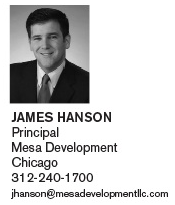A Whole New (Urban) World
To return to our question – are we seeing a return to urbanism in the Chicagoland area? Is the city, once again, becoming the preeminent housing destination, or will the suburbs continue being the bastion of good schools and safe, family-friendly environments?
For Siciliano, it will all ultimately come down to schools, and whether or not the Chicago Public Schools system can broadly appeal to young, working parents.
“There’s a lot more work to do with the public school system,” he says. “The demand is there for the schools to be able to accommodate the people who want to stay here. But if they just don’t have the options to do it, then people are going to feel they don’t have a choice … To keep people around, the school system, not only the elementary schools, but the high schools, as well, have to create some better options to allow people to make the choice to stay, as opposed to feeling no choice.”
To illustrate his point, Siciliano references a friend of his who adored everything about the city, and chose to raise his son on the city’s North Side; however, when the son graduated from their neighborhood’s terrific grammar school, he was not selected for one of the city’s selective enrollment high schools, and the local high school, in the opinion of Siciliano’s friend, was not adequate. With the family budget not allowing for a private school, Siciliano’s friend was forced to sell his home and move the family out of the city so his son could attend a better high school.
“Unfortunately, that dynamic is happening very often,” Siciliano says.
Schools, Shimkus feels, will continue to give the suburbs an edge, but she also feels that the city’s cultural edge will not be enough to pull residents from the suburbs, given both the pronounced cultural offerings of the suburbs and the incredibly convenient transit systems that allow for easy access to downtown Chicago.
“Chicago is a great place to visit, but you can get on a train and be there in 30 minutes,” she says. “Then you can go back to the suburbs, because that’s where everything is.”
Even James Hanson feels that although the downtown residential market has flourished in recent years, it has not necessarily done so at the expense of Chicago’s suburban markets.
“Certainly there are more people living in the city and the downtown markets than there were 30 years ago. Is that coming at the expense of the suburbs? I don’t think so,” he says. “I don’t think the suburbs are going to experience declining populations anytime soon because everyone is flocking back into the city, but I think there is definitely a segment of the population, and a growing segment at that, that says ‘I want to be at a more urban location.’”
The important thing going forward, he adds, will be what those new urban residents desire in their neighborhoods, and how the area’s commercial and public enterprises respond to those demands. Already, businesses have responded in two key areas: food and cars. With food, Hanson explains, a new line of urban grocers, such as Trader Joe’s and Mariano’s, have opened shop in Chicago’s downtown to accommodate the surging population, while with automobiles, car-sharing services such as Zipcar – a company that did not even exist until 2000 – have thrived servicing more walkable, bike-friendly communities that require occasional access to cars.
And if urban residents demand stronger city schools, Richard Hanson says, then the area’s housing market will accommodate those demands.
“Everything is demand and supply,” he explains. “As people demand to live downtown and have children, they’re going to fix the school system. It’s amazing how you hear these stories about certain schools that just become better and better because the parents get involved in that particular school, and increased the base of resources and the desire of the school to do well. I think that’ll happen here. If there’s a strong demand for good schools, good schools will be created.”




That’s a great article. Nice job! I will say, however, that although people/parents have been working together to make some Chicago schools better and safer for their children, the 800-lb. gorilla – Chicago politics/CPS/Teacher’s Union – has to be fully dealt with and undergo a broad and radical systemic education sea change. Until that happens, I don’t believe Chicago will experience a massive influx of new residents and ever outstrip suburban growth. I lived in the city (Lakeview/Roscoe Village) for a time in the late 90s/early 00s, and loved it. The city can’t be beat for its entertainment and many amenities. But, I am now a husband and father of 2 small children living in a near-western suburb. We want to give our children a shot at the best education possible, and that will probably mean living in the suburbs for that alone (never mind what I and many others perceive to be city government mismanagement not just in the education sector). So, yes, I believe that wherever the best schools are located, so there moves the bulk of the demographic.